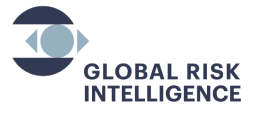This paper examines how financial channels connect actors in the Middle East and Latin America, with particular emphasis on terrorism financing risks. While trade, migration, and cultural exchanges have created legitimate and beneficial ties between these regions, evidence demonstrates that criminal and extremist networks exploit these connections to facilitate illicit financial flows.
Globalization of Terrorism Financing Networks
Over the past several decades, terrorism financing has evolved into a highly decentralized, adaptive system that leverages multiple channels across borders. Networks employ trade manipulation, informal value transfer systems, commodity trafficking, and integration into local criminal economies to sustain operations. Latin America, due to its porous borders, active informal markets, and underregulated financial sectors, has become an important node in these global financial flows.
Presence in Latin America and the Tri-Border Area
The Tri-Border Area (TBA), where Brazil, Argentina, and Paraguay converge, has long been identified as a key vulnerability point. Its concentration of cross-border trade, free-trade zones, and weak oversight mechanisms make it an attractive hub for illicit finance. Beyond the TBA, networks have also been linked to major urban centers in Brazil, Colombia, Chile, Mexico, Venezuela, and smaller communities across the region.
Illicit actors often embed themselves within diaspora or trade communities, blending licit and illicit activities. This allows them to raise funds, launder proceeds, and conduct operations with relative anonymity. Reports indicate overlap between terrorist financing, narcotics trafficking, organized crime, and informal commerce in these regions, further complicating detection and disruption efforts.
Financial Networks and Revenue Sources in the TBA
In Latin America—particularly the TBA—terrorism financing networks and their facilitators employ diverse revenue-generating schemes. Common typologies include:
- Trade-Based Money Laundering (TBML): Techniques such as over- and under-invoicing, phantom shipments, and the misuse of free-trade zones disguise illicit proceeds as legitimate commerce. Currency exchange houses and informal brokers are often used to repatriate or redirect funds abroad.
- Informal Value Transfer Systems (IVTS): Systems like hawala facilitate rapid, trust-based money transfers outside of the regulated financial sector, bypassing anti-money laundering (AML) controls.
- Commodity-Based Laundering: Illicit trade in commodities such as narcotics, charcoal, oil, diamonds, and gold provides high-value, fungible assets that can be integrated into global markets with limited transparency.
- Bulk Cash Smuggling: Physical transportation of large amounts of currency across borders remains prevalent, often concealed within vehicles, cargo, or personal effects.
- Smuggling of Consumer Goods and Document Fraud: Counterfeit or low-tax cigarettes, luxury items, and falsified identification documents enable broader illicit trade and financing networks.
- Counterfeit Currency and Digital Assets: Counterfeit U.S. dollars and the increasing use of cryptocurrencies—including over-the-counter (OTC) brokers, peer-to-peer (P2P) exchanges, and mixers—create challenges for monitoring and tracing illicit flows.
Additionally, front companies in sectors such as construction, import/export, and real estate are frequently leveraged to legitimize and integrate illicit funds.
Red Flags and Risk Mitigation
To counter these risks, financial institutions, regulators, and businesses must heighten vigilance and strengthen compliance frameworks. Key red flags include:
- Cash-intensive businesses with disproportionate links to high-risk regions.
- Import/export firms located in free-trade or border zones with inconsistent or circular trade routes.
- Use of third-party payments or complex trade finance structures.
- Transactions involving gold, precious metals, used vehicles, or electronics inconsistent with declared business activities.
- Increasing reliance on OTC crypto brokers serving jurisdictions with limited oversight.
Risk Mitigation Measures
- Enhanced Due Diligence (EDD): Applied to clients, sectors, and jurisdictions identified as high risk. Measures include obtaining verified documentation on ultimate beneficial owners (UBOs), conducting thorough source-of-wealth and source-of-funds checks, applying continuous monitoring of account activity, and implementing risk-scoring models that flag unusual trade patterns or high-value cross-border payments. Special focus should be placed on cash-intensive businesses, free-trade zone operators, and politically exposed persons (PEPs).
- Trade Transparency Units (TTUs): Specialized mechanisms to detect trade-based money laundering (TBML) through bilateral and multilateral data sharing. TTUs compare import/export invoices across jurisdictions to detect mispricing, phantom shipments, and circular trading. They rely on advanced data analytics and AI to identify anomalies in commodities such as gold, diamonds, or electronics. TTUs also act as an intelligence bridge between customs authorities, financial intelligence units (FIUs), and commercial banks that provide trade finance.
- Licensing & Oversight: Require all money service businesses (MSBs), currency exchange houses, brokers, and informal value transfer system (IVTS) operators to be formally licensed and registered. Regulators should conduct fit-and-proper checks on owners, enforce reporting of suspicious and large transactions, and perform regular compliance audits. Supervisory authorities should also coordinate internationally to monitor cross-border transfers and ensure strict adherence to sanctions, AML, and counter-terrorism financing obligations.
- Commodity Transaction Monitoring: Apply heightened scrutiny to the trade of high-value or portable commodities such as gold, diamonds, precious metals, and luxury goods. Dealers and traders should be licensed, maintain full chain-of-custody documentation, and report high-value or unusual transactions. Regulators should require disclosure of origin, counterparty, and transport details for commodity trades, while financial institutions should integrate commodity transaction data into AML monitoring systems to flag over/under-invoicing or routing through high-risk jurisdictions.
- Digital Asset Supervision: Enforce strict licensing and registration of virtual asset service providers (VASPs), including exchanges, OTC brokers, and custodial wallet services. Require them to apply robust KYC/AML controls such as identity verification, geolocation checks, and wallet attribution. Regulators should mandate suspicious transaction reporting for unusual crypto activity, apply the FATF “Travel Rule” for cross-border transfers, and deploy blockchain analytics tools to detect use of mixers, privacy coins, and P2P transactions linked to high-risk jurisdictions. Enhanced oversight should be applied to large or rapid transfers inconsistent with customer profiles.
Conclusion
Terrorism financing networks in Latin America demonstrate the ability of illicit actors to rapidly adapt to diverse financial, commercial, and regulatory environments. By exploiting systemic weaknesses—such as limited oversight in free-trade zones, gaps in trade data transparency, underregulated money services, and the anonymity of digital assets—these networks sustain transnational operations that intersect with narcotics trafficking, organized crime, and illicit trade flows. Their integration into both formal and informal economies makes detection and disruption particularly challenging.
Addressing these risks requires a multi-layered strategy. Regulatory enforcement must be strengthened through consistent supervision, licensing regimes, and enhanced cross-border cooperation. Intelligence sharing between domestic and international agencies—particularly financial intelligence units (FIUs), customs authorities, and trade transparency units (TTUs)—is critical to identifying cross-jurisdictional schemes. At the institutional level, financial institutions and businesses must adopt compliance innovations, including advanced analytics, trade-based money laundering detection tools, and blockchain forensics, to stay ahead of evolving methods.
Robust due diligence and risk-based monitoring frameworks remain the cornerstone of prevention. Measures such as identifying beneficial ownership, auditing commodity transactions, and scrutinizing cryptocurrency activity help close vulnerabilities that illicit actors exploit. Ultimately, closing loopholes across trade, financial, and digital asset ecosystems not only constrains the operating space of terrorism financing networks but also strengthens the overall integrity and resilience of the region’s financial systems.

